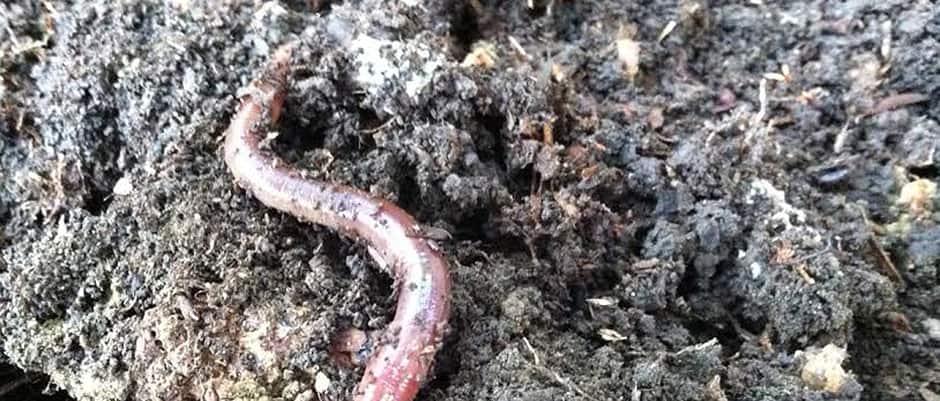Share this article
Invasive Earthworms Spread Mercury to Wildlife
It’s true that the early bird catches the worm but, in New England’s forests, the worm might actually be killing the bird with toxic trace metals.
Invasive earthworms are absorbing toxic metal pollutants released from human activities, such as burning coal and lead gasoline from soil, which might be contributing to birds’ decline as well as the decline of amphibians and other mammals that feed on them, according to a new study published in the journal Soil Biology and Biochemistry.

Justin Richardson stands in a forest where he collected invasive earthworms for his study. Richardson found that earthworms had high levels of mercury and lead, which may be the reason for the decline of some bird and amphibian species.Image Courtesy: Justin Richardson
“People are wondering how the metals are getting to these birds,” said lead author, Justin Richardson, who recently received his PhD at Dartmouth College. “There wasn’t a clear link from the ecosystem to birds and salamanders before. But other studies were finding they have high concentrations of mercury and my research suggests it’s not the insects they’re eating that are transferring the mercury. It’s these earthworms.”
As part of their research, Richardson and his colleagues collected both exotic and invasive earthworms across Vermont and New Hampshire and analyzed their tissues for toxic trace metals, and they found that they all had a high concentration of toxic metals, particularly lead and mercury. Richardson then had a lingering question in his mind: Can the presence of toxic metals in earthworms be related to the high levels of mercury and lead in wildlife such as the tissue of red back salamanders (Plethodon cinereus) and the eggs of Bicknell’s thrush birds (Catharus bicknelli)? His research suggested there is likely a link.
Earthworms are not native to New England since forests developed without them since the last ice age and the original earthworms moved south to New Jersey around 11,000 years ago. However, humans have been introducing exotic earthworm species from Europe and Asia through activities such as fishing and timber harvesting, Richardson said. Some common invasive earthworms in New England include the lumbricus species, which have been introduced through fishing, and a species known as the crazy snake worm or the Alabama jumper (Amynthas agrestis), from Asia, which has only been identified in the past few years.
“The crazy snake worms devastate the soil,” Richardson said. “They’re the largest earthworms that live at the surface, and ground foraging birds see these big tasty worms and consume them when they would otherwise be focusing on other invertebrates like insects.”
Further, Richardson found earthworms accumulating toxic metals changed the form and function of their host soils, including their chemical composition, physical composition and the ability for soils to hold toxic metals. “The soil could regain its composition if the earthworms are magically gone,” he said. “But when it comes to controlling earthworms, it’s still unclear how to do it. We have only identified the problem.”
Richardson hopes to determine how the earthworms are getting to New England, where they are exactly, and to find methods to slow down the expansion of their range, especially since they are devastating many wildlife species. One study conducted in Minnesota showed that oven birds (Seiurus aurocapilla) are losing their territory because of earthworm’s effects on soil.
The main takeaways of his study, according to Richardson, are that earthworms are accumulating toxic metals and are changing the form and function of soil. This, in turn, affects the whole ecosystem. Richardson urges people to care and protect soil, especially since 2015 is the FAO’s International Year of the Soil — an initiative implemented by the Food and Agriculture Organization of the United Nations.
“One thing that people can do to help is to not release earthworms in the northeastern United States,” Richardson said. “Another thing is to just have an appreciation for the soil, which is the foundation of forests that protect humans and wildlife health.”
Header Image:
A crazy snake worm wriggles through soil. According to a recent study, this and other invasive species of worms found in New England absorb toxic metals and may spread those metals to wildlife that consume the worms.
Image Courtesy: Justin Richardson








